Electrifying your student life at Solar Team Twente
“A student team after a board year? Why not!” And that is how I started another year of evading my studies. In the past year I did however learn a lot. Not only did I got to know the inner workings of a solar powered car, but also what goes on before and after the design of a project. The hassle of designing a working ánd efficient product and how to make sure the manufacturing is foolproof. And to top it all off, end with an amazing race in South Africa.
Innovation Edition
“South Africa?” You might think, “but the solar race was in Australia, right?” and you would be absolutely right. Every uneven year at the ending of October the Bridgestone World Solar Challenge takes place, more than a year after the Australian edition of Solar Team Twente has started to work on their car. But since they leave for the race in September, the office would be empty. On top of that, all the work would be halted for half a year when they are back in the Netherlands until the next Australian edition started. This is why last year some team members decided to start a new edition, the innovation edition. This team would start in September, right after the old team had left for their race in Australia. These innovators would look through the systems of the current car and come up with new ways to improve the existing systems or design whole new ones. These projects are then worked out to a design, produced, tested and eventually used in another solar race, the South African Sasol Solar Challenge, which takes place at the end of September in every even year. I am part of this first innovation edition of Solar Team Twente.
Systems in a Solar Car
One of the unique characteristics of Solar Team Twente is that we design every part of the car ourselves, from soldering the panel, welding the battery and assembling the motor to designing our very own motor controller and data acquisition interface. Since I already bragged about knowing the inner workings of a solar car, I might as well prove my point and introduce you to the main high voltage (HV) systems. The three main HV systems that have to be designed for every new solar car are the panel, battery and motor. To achieve the highest efficiency possible these systems are tailor-made by the smartest students in our team, the electrical engineers. In our current car Red XI, previously known as Red X, these parts were designed and assembled by Yvar, Jorian and Jelle who you might bump into at the university as they all started their studies again last February.
Panel
As for the solar part of the car. The panel EE student searches for new techniques and prototypes, selects the best combination fitting the regulations and budget, and designs the panel. After ordering (or trying to get the cells sponsored), this EE student solders the modules together, gets them laminated and places them on the upper body of the car. To improve the efficiency of the panel, the panel is split into several groups which are connected to their respective maximum power point trackers. These MPPTs are located in the panel box along with a safety print to shut down the panel when the emergency button is hit. On our car, RED XI, the maximum allowed area of panels on the car was optimized by slicing the less efficient part of the solar cells. This was a very delicate process as solar cells are very fragile. To ensure the panels have a place on the car this EE student works closely together with the mechanical, aerodynamic and structural engineers (subgroup MAS for short) of the panel workgroup.
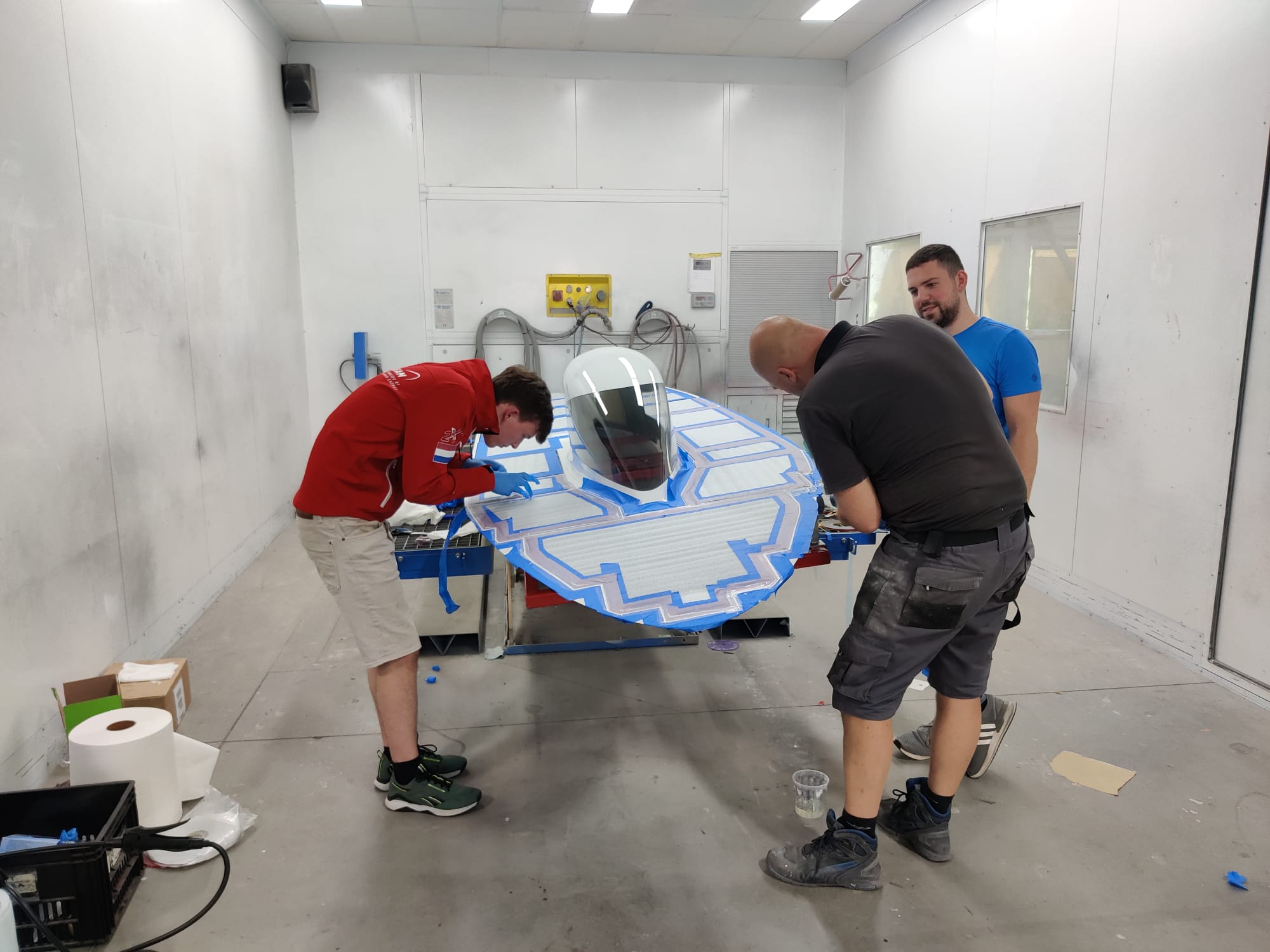
Solar Panel at the painter for finishing touches
Battery
The battery EE student has the same process steps while selecting cells as the panel EE student , only for battery cells, but the assembly is much different. For the battery, sensors are important, so when welding busbars on the cells, voltage and temperature sensors are placed as well. As this part of the solar car is a heavy one, we always try to use the most energy dense cells as possible. In RED XI we use Lithium polymer battery cells, a light weight technology with high power density. This battery has to be used under pressure. To ensure the battery stays in a save condition we designed the battery management system (BMS), this system regulates the in and outputs of the battery and sends the data from the sensors to the data acquisition system. To fit the battery and the BMS in the car there is another workgroup, the Battra Boys (not limited to only boys).
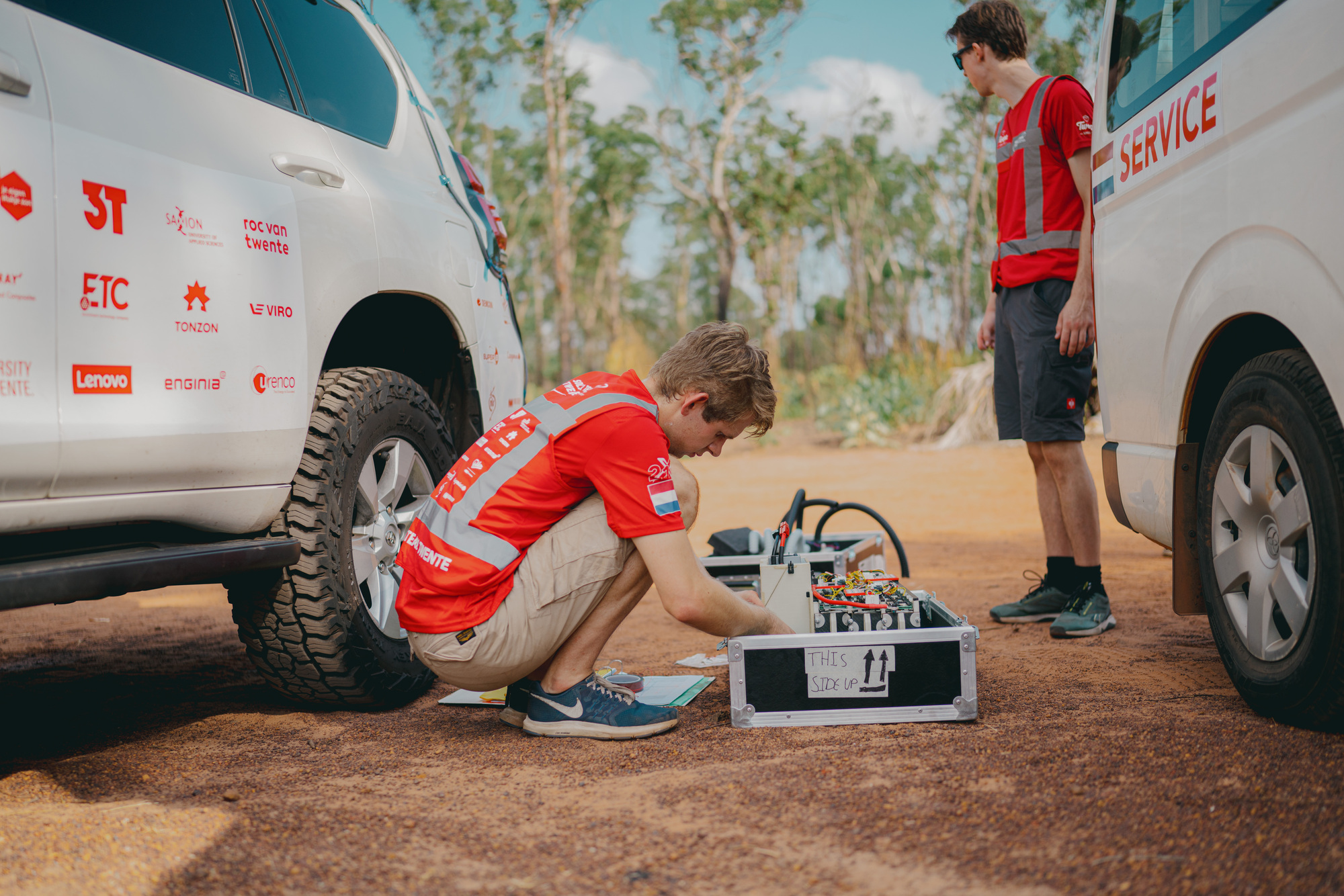
Jorian with his battery in Australia
Drivetrain
To get the car rolling we also need a motor of course. The motor engineer designs a motor based on the characteristics of the car, mostly the output of the battery and the needed torque. For RED XI we used an axial flux motor, meaning that the rotor contains magnets and turns with the rear wheel and rim. The magnets in the rotor are placed in such a configuration that the magnetic field is strongest towards the stator. The production of the motor parts is mostly done by external parties such as Jan de Wikkelman, as we like to call him. The assembly of the motor is done by the drivetrain engineer, not necessarily an EE student . The design and realization of a motor are never the same and thus characterization is done on our motor test bench, MTB. As we drive on open roads during the race, the motor must be able to drive the maximum speed: 130km/h. But we also want to simulate situations where our motor needs more torque, such as strong winds or mountains. So when a motor is placed in the MTB another motor turns in the same direction at the other side but ‘brakes’ to give a counter force, resulting in very loud tests that very occasionally make our workplace shake.
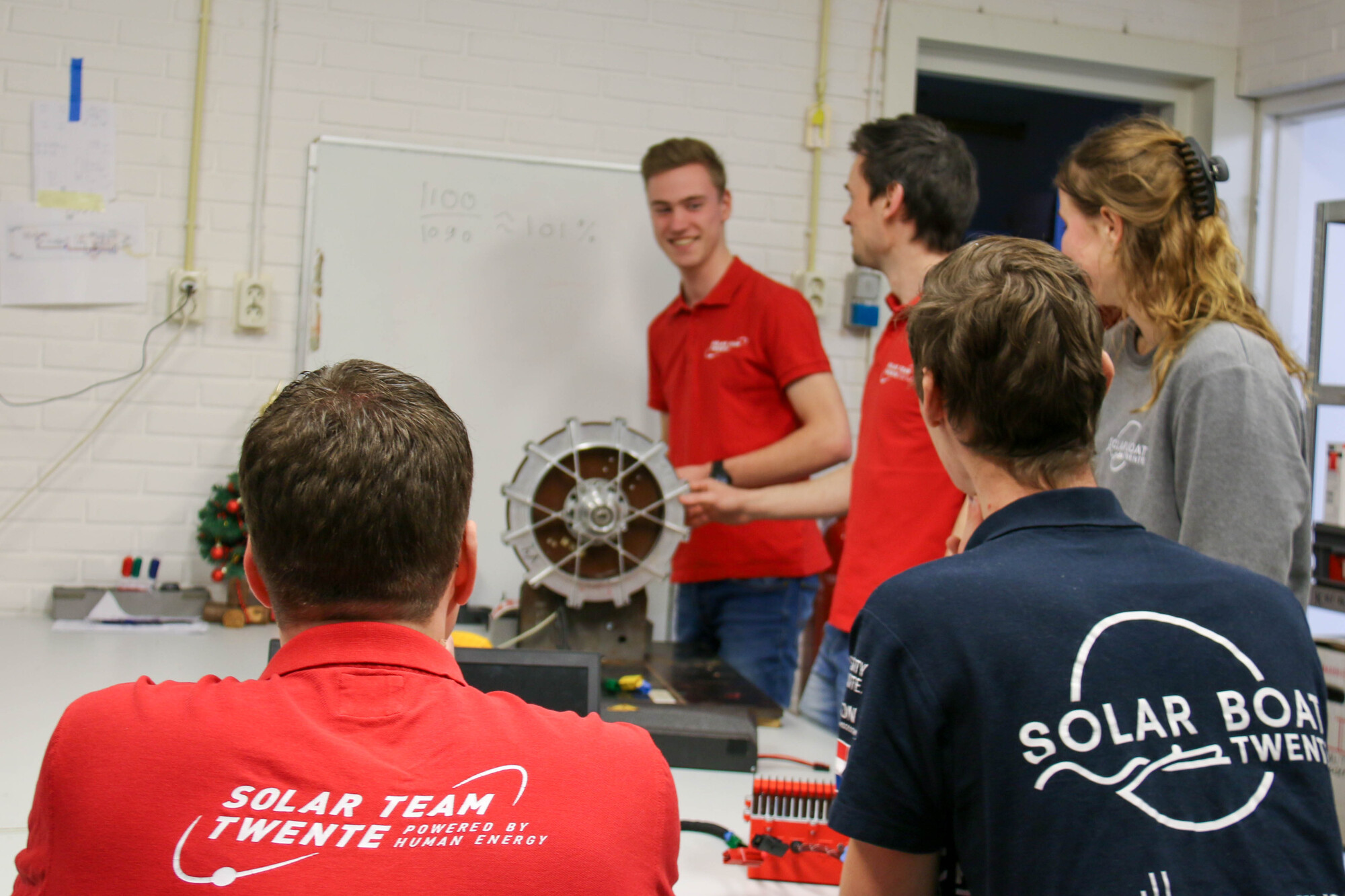
Workgroup for the motorcontroller
Low Voltage
Besides these high voltage systems, we also have a low voltage part. This part handles the lights, horn, rear camera, transceiver, steer, CAN (communication) lines and sending all data to our laptops. Part of these systems can be used in multiple cars, but when regulations change between editions these systems also have to change. Besides a responsibility on the high voltage side, every electric engineer also contributes to these systems. Either because they need to be changed, or because they can use an upgrade.
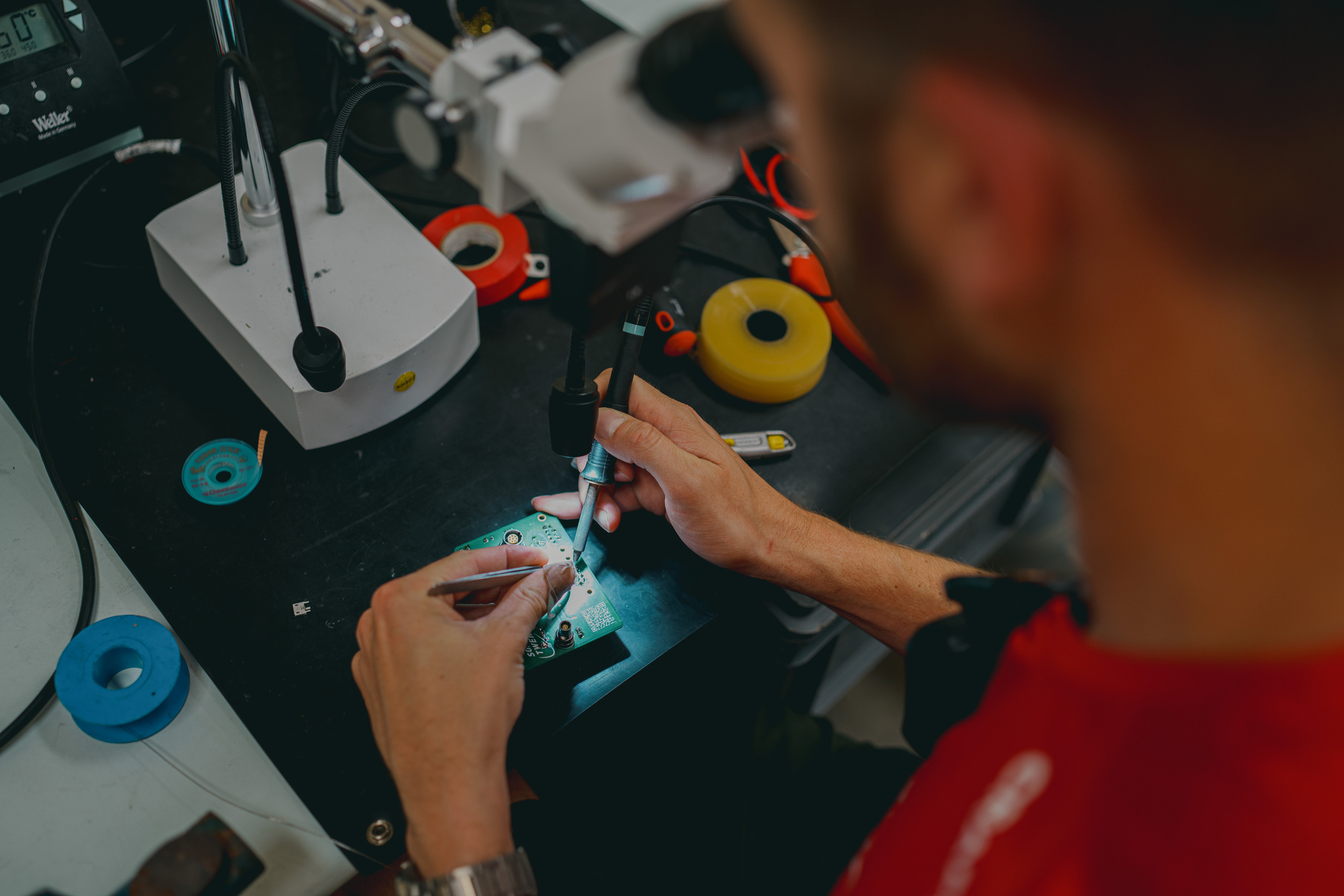
Sabine
Now you might wonder what I have been doing for the past year as most things I have written about till now are about systems that need to be designed for a new car, but as part of the innovation edition and not the Australia edition we already have a working car. My focus was indeed not on making one of these systems but innovating on what was already there. At the start of the academic year this mostly meant trying to find flaws in system to improve, eventually my eye landed on Sabine, the Solar Array Balancing Interface New Edition. The problem Sabine solves is quite simple, but annoying: solar cells have a varying IV curve based on solar irradiance, manufacturing and some black magic. This difference in IV curve means that every cell has a different maximum power point. The maximum power point being held by the MPPT is then limited by the weakest cell in a string. Normally we would solve this problem by bypassing cells that were limiting more than they were contributing, allowing the MPPT to draw more power. However, in this set up some cells are not contributing, while they still can deliver some energy.
A few years back Elmar Peters, known by most of our Scintilla veterans, together with Stefan Halsema thought of a solution, named it Sabine and won the technical innovation award at the world solar challenge in Australia. This version got to know some redesigns but was rarely implemented due to shortage of time to adapt the system to a new panel, and the lack of documentation also did not help. So that is where I started, with a lot of system engineering and diagrams. When we had our design choices all mapped out and knew what way to go the designing started. As most of this is confidential (our competitors have not been able to copy this technology) I cannot go into details unfortunately. But I am confident that most of you can imagine the general set up and might wonder what the big deal is about. That is where the typical solar team objective comes in: efficiency. Sabine is making our panel more efficient, but only adding power from cells that would otherwise be turned off. This addition is small compared to our total power output of the solar panel. Not to mention the additional weight of another system hanging below our upper car body. Sabine had to be light weight and highly efficient. Luckily, I had enough help from former Solar Team members to realize this.
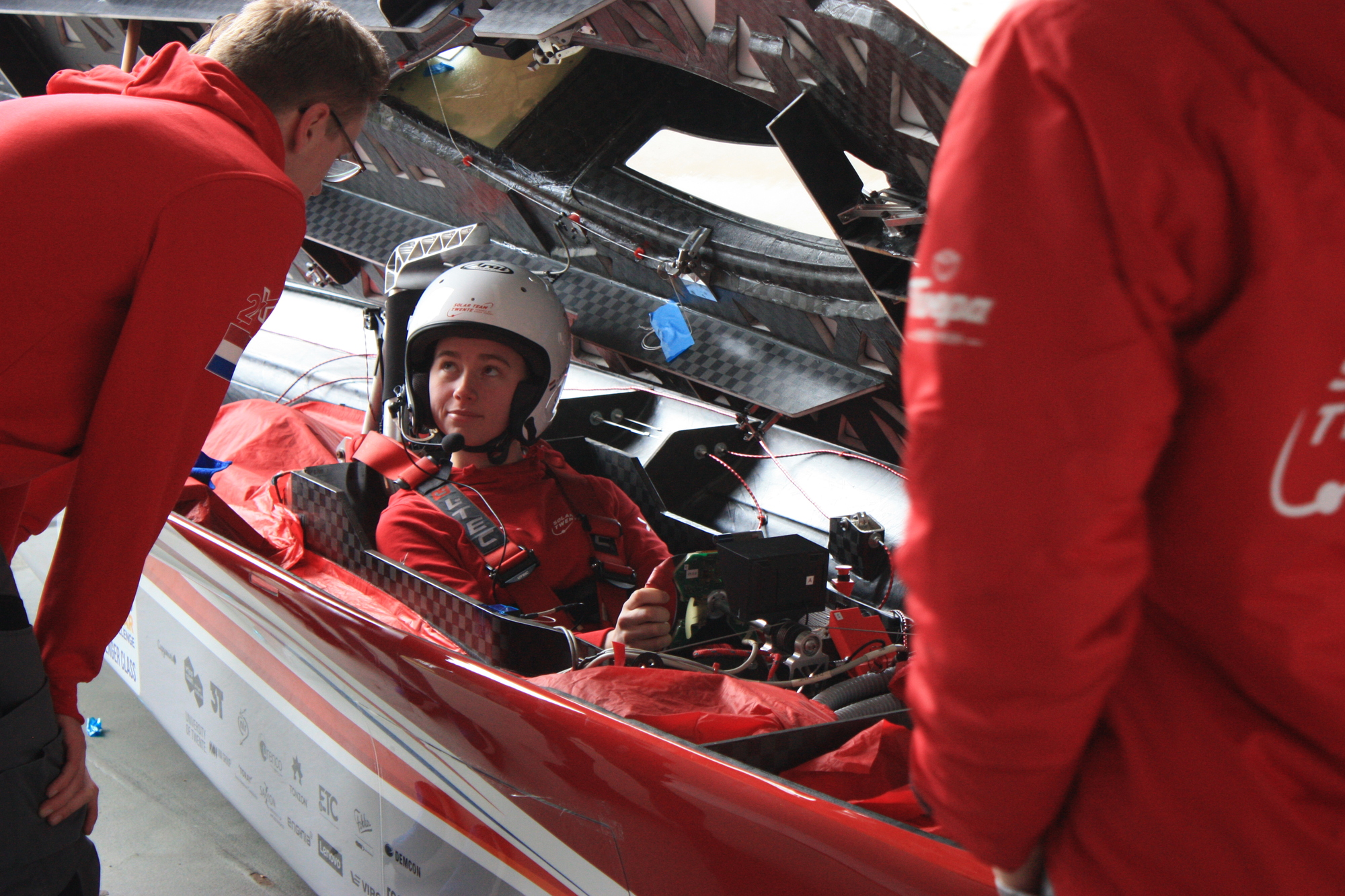
Trail drive in the solar car
Besides learning, I have gotten to experience what it is like to work in a multidisciplinary team with like-minded students, build contacts with companies and driven in a solar powered car. It is an experience I can recommend to everyone. The university offers a whole lot more than just studies, it is easy to do something besides your study and switch it up for a year, whether it is a board year or a student team. I hope you have gotten an idea of what Solar Team does, the kind of technologies we work with and possibly got interested in joining a student team yourself. Either way, be sure to follow our race in South Africa coming September!
